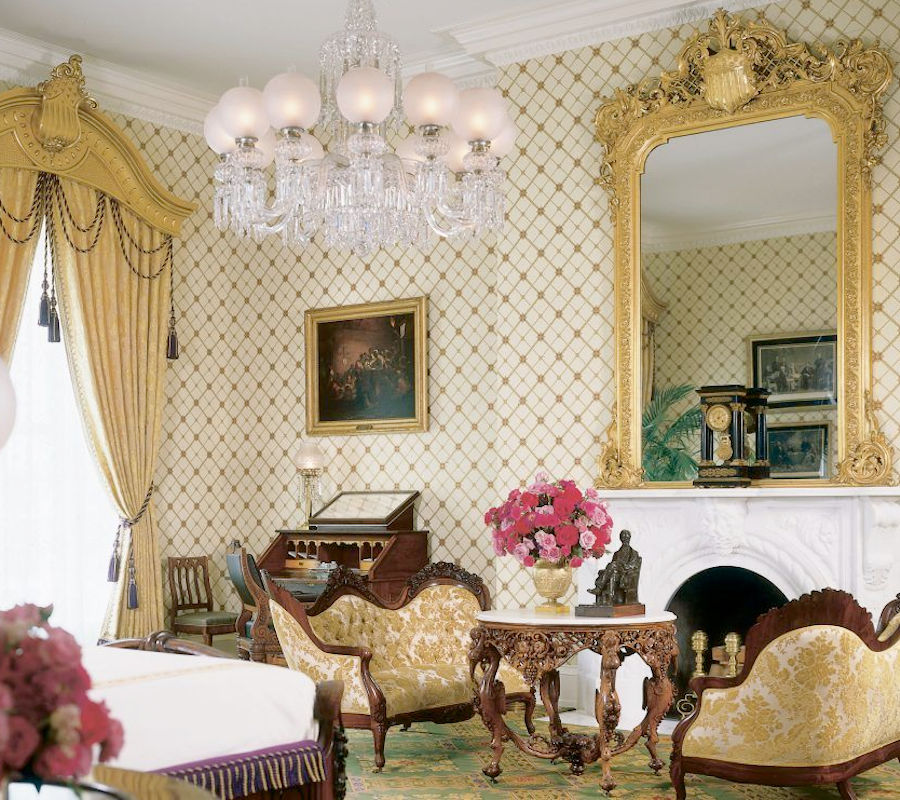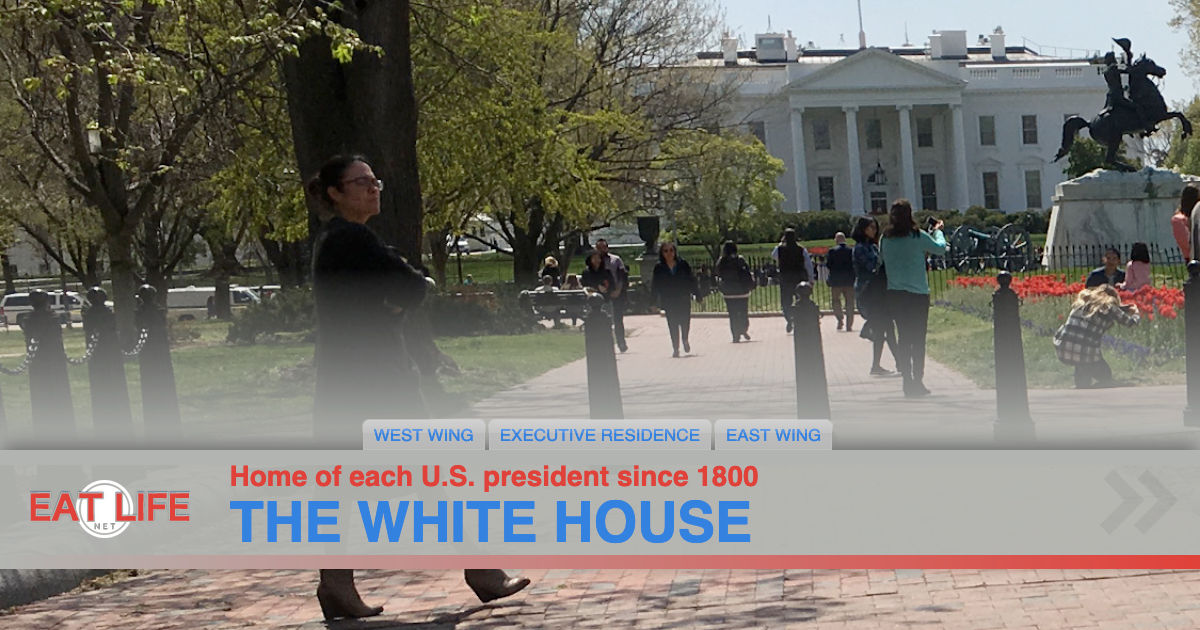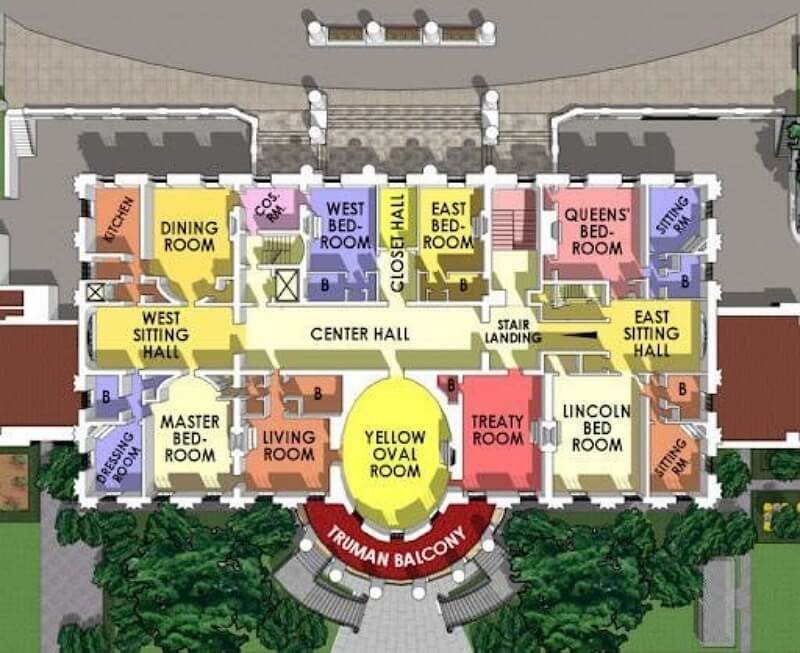
The second floor is used for private living arrangements and entertainment. It contains the bedrooms, living rooms, and sitting rooms for the family. Few important rooms on this floor include the Treaty Room, Yellow Oval Room, Lincoln's Bedroom, and Queen's Bedroom.
https://www.edrawsoft.com/article/white-house-floor-plan.html
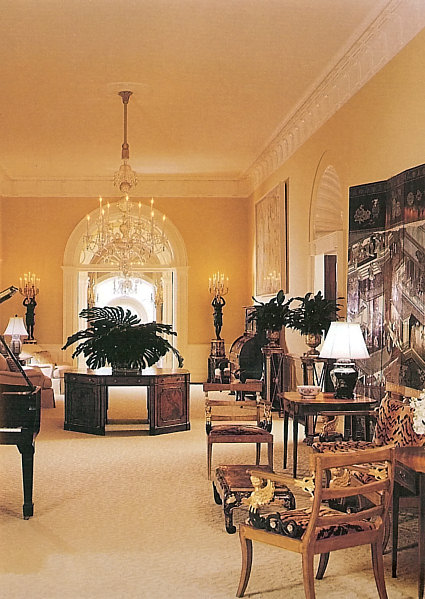
It runs east to west connecting the East Sitting Hall with the West Sitting Hall. It allows access to the elevator vestibule, East and West Bedrooms, the Grand Staircase, Yellow Oval Room, the first family's private living room, and the president's bedroom.
- William Howard Taft decorated the hall with exotic plants and art he had brought with him from his tenure as Governor-General of the Philippines.
- Woodrow Wilson watched motion pictures here as the present White House theater was still a cloakroom.
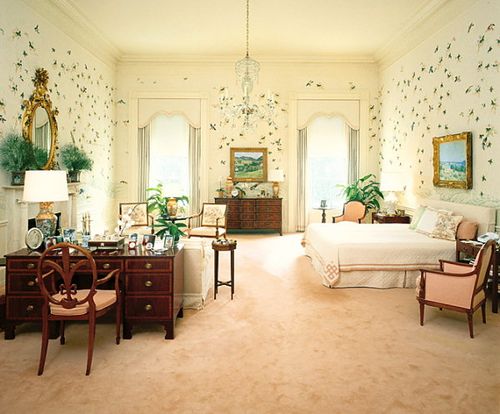
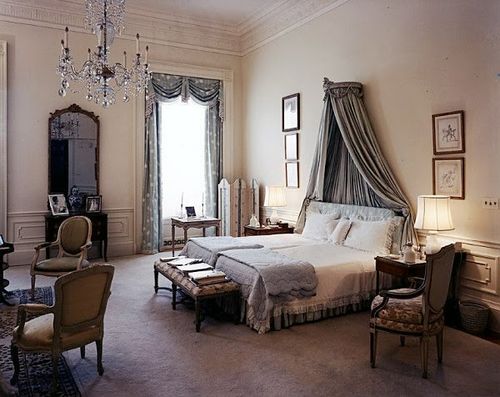 Kennedy
Kennedy
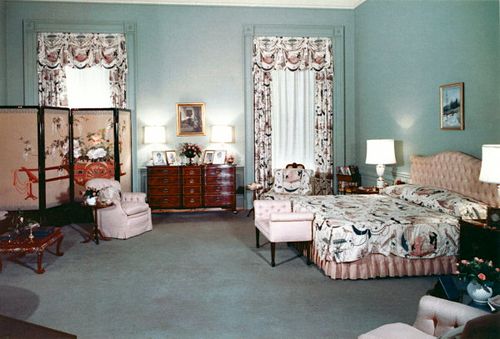 Eisenhower
Eisenhower
http://sandraespinet.com/wordpress/2012/11/05/presidential-bedrooms
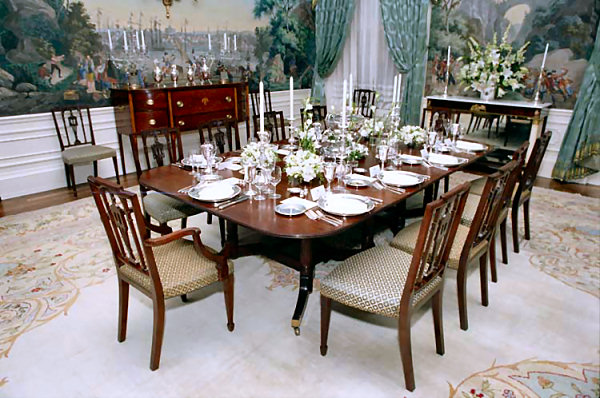
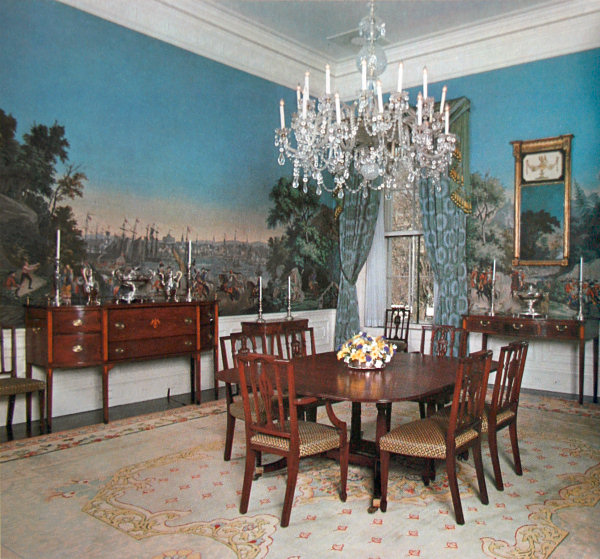 Ford
Ford
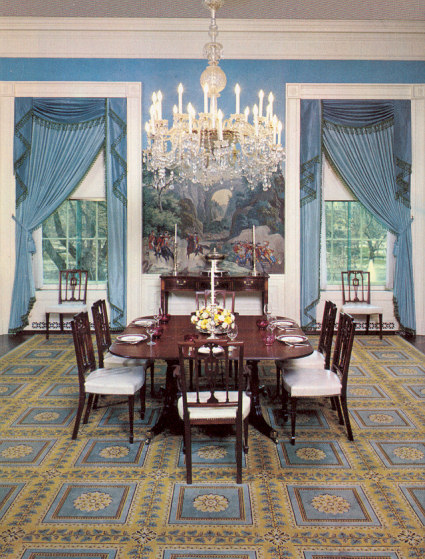 Nixon
Nixon
https://www.seasonsforallathome.com/2009/01/decorating-at-the-white-house-private-dining-room.html
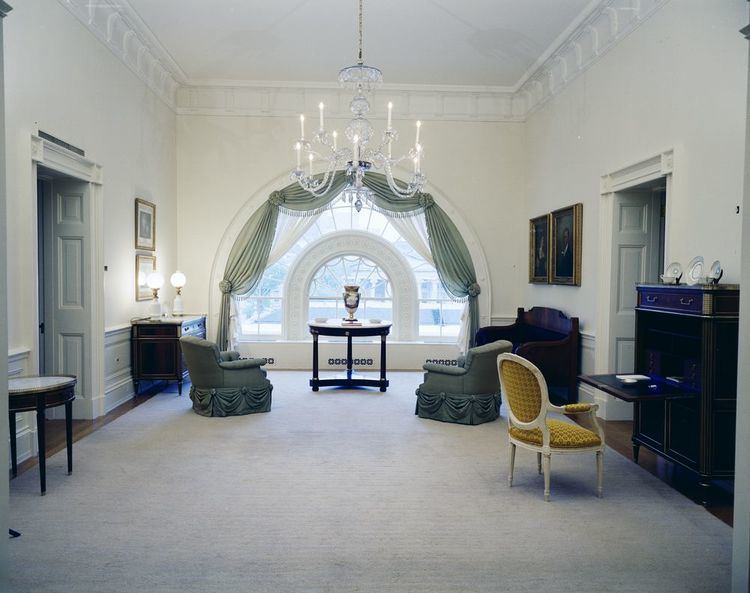
First used as a reception room for guests of the president (the Lincoln Bedroom and the Queens' Bedroom were originally offices of the chief executive), it is now a family parlor with access to the east rooms on the second floor.
The room is entered from the second floor corridor on the west side of the room. A large fanlight window on the east side of the room faces the Jacqueline Kennedy Garden, the East Colonnade, the East Wing, and the U.S. Treasury. Two disguised doors allow access to a closet and a staircase up to the third floor.
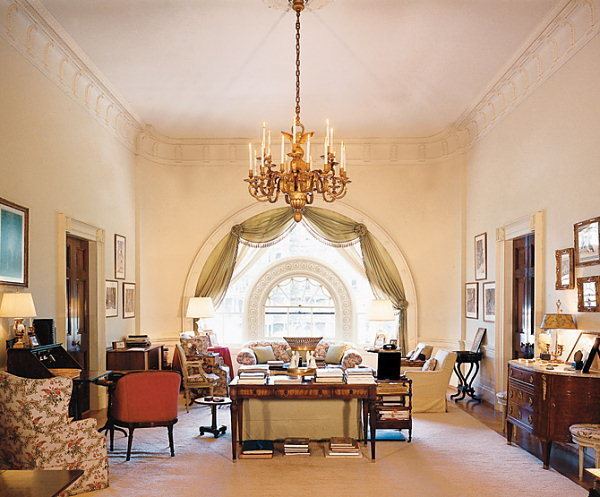
The room is entered from the second floor Center Hall on the east side of the room. The room features a large lunette window on the west wall looks out upon the West Colonnade, the West Wing, and the Old Executive Office Building. The room is used by first families as a less formal living room than the Yellow Oval Room.
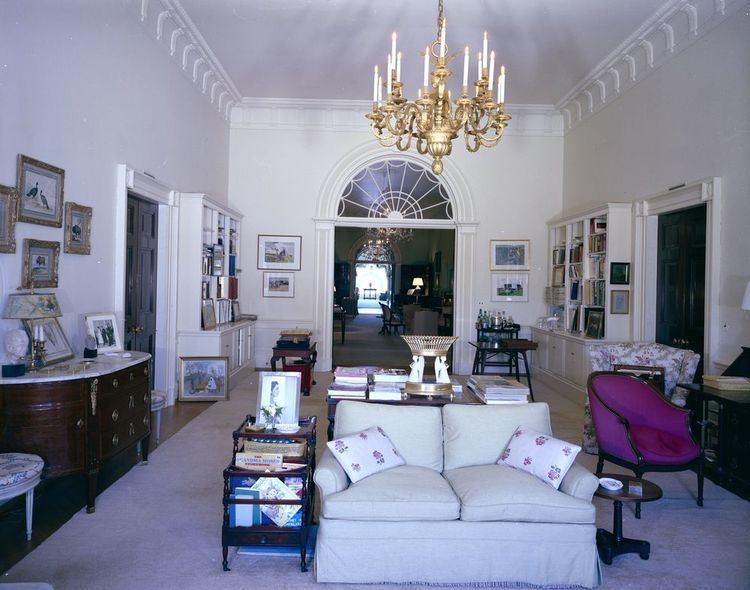
Eleanor Roosevelt, who screened the area off from the Central Hall, particularly enjoyed it. In the subsequent Truman reconstruction, architects enclosed the hall with solid partitions and created a living room. At that time, the kitchen elevator was extended to this floor, and the door opened into this room; the Kennedy restoration rerouted it into the little hall when the room to the north was converted into the Family Kitchen. During the Truman reconstruction the east wall was rebuilt to include framed double doors allowing the room more privacy.
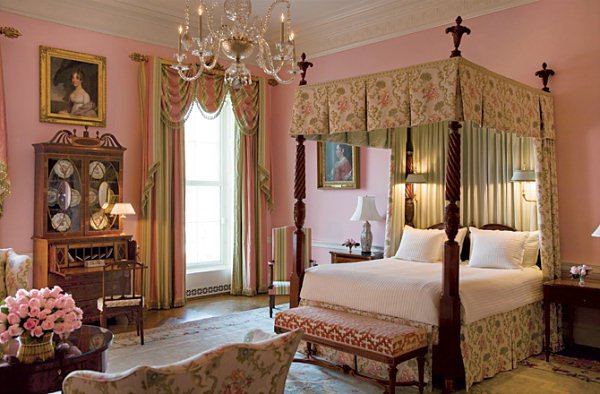
The Queen's Bedroom is the name for one of the two guest rooms, actually guest suites, along with the Lincoln Bedroom, on the second floor.
Queen Elizabeth II, Queen Sonja of Norway, and Queen Sofia of Spain have stayed in this room, as well as Winston Churchill who used this room during numerous visits to the White House during WW2. Since 1902 the room has been decorated in a pink or rose color scheme.
Now, there is a very fine, far larger, and more comfortable guest house arrangement that is provided for use by visiting heads of state, including Queen Elizabeth II. It is called Blair House, across the street.
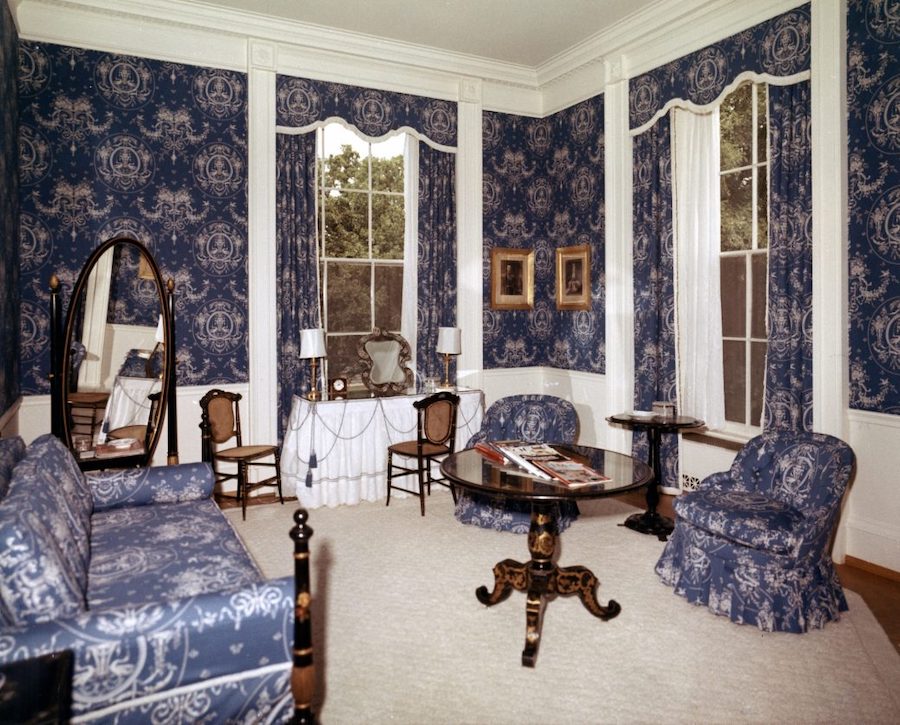
This sitting room is adjacent to the Queens' Bedroom. Jacqueline Kennedy added the dark blue and white cotton wallpaper and black and gold furniture and was the previous owner of the tea table at center. Mrs. Kennedy left the tea table at the White House upon her departure. To this day, the Queens' Sitting Room has retained its Kennedy-era decor.
https://www.whitehousehistory.org/photos/queens-sitting-room-john-f-kennedy-administration
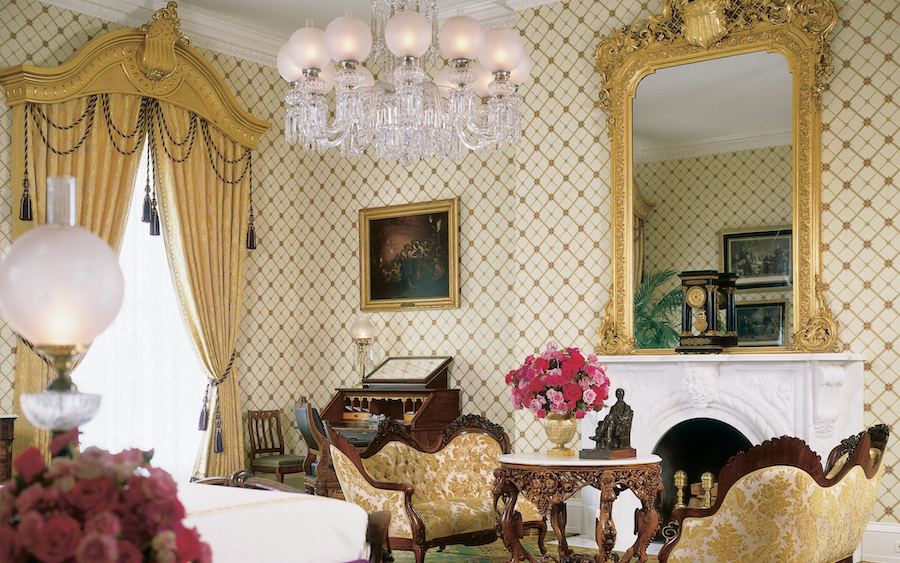
President Abraham Lincoln never used it as a bedroom; instead this was his executive office and he utilized the suite for cabinet meetings. The resplendent rosewood bed wasn't his either, although his wife, First Lady Mary Todd Lincoln, did indeed purchase the piece for visiting dignitaries. And while a framed copy of the Gettysburg Address has pride of place, the document that the 16th president signed in the room was actually the Emancipation Proclamation. Add to that ghost sightings and a slew of famous overnight guests, and it's no wonder that the room has developed a mythical aura in the American consciousness.
The Gettysburg Address:
The most significant object in the Lincoln Bedroom is the fifth and final copy of the Gettysburg Address, handwritten by President Abraham Lincoln. The document lives in the desk that Lincoln used to formulate his thoughts on emancipation. "It's the only one titled, dated, and signed. It is a rarity in a collection that includes very few documents and consists mostly of fine arts and decorative arts objects.
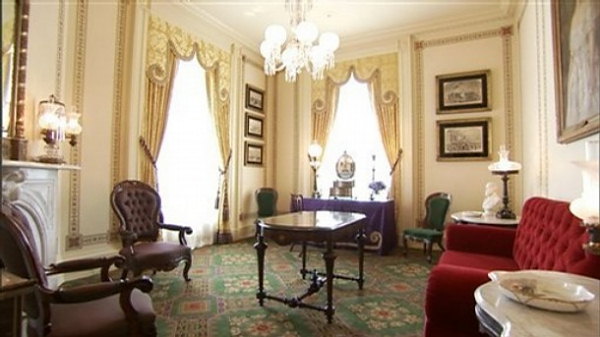
Like the other rooms on the east side of the second floor, the Lincoln Sitting Room was for its first hundred years used as part of the president's offices-specifically as the White House telegraph room between 1865 and 1902. When the West Wing was constructed in 1902 and the executive offices moved there, this room became a sitting room for guests in the bedroom next door.
The room became Richard Nixon's favorite spot in the house (he even had it replicated in his presidential library). He liked to work beside its roaring fireplace so much that he sometimes lit a fire even in the summer and had the air-conditioning turned on. He listened to his favorite music, the score of Victory at Sea, as he worked in his favorite brown easy chair.
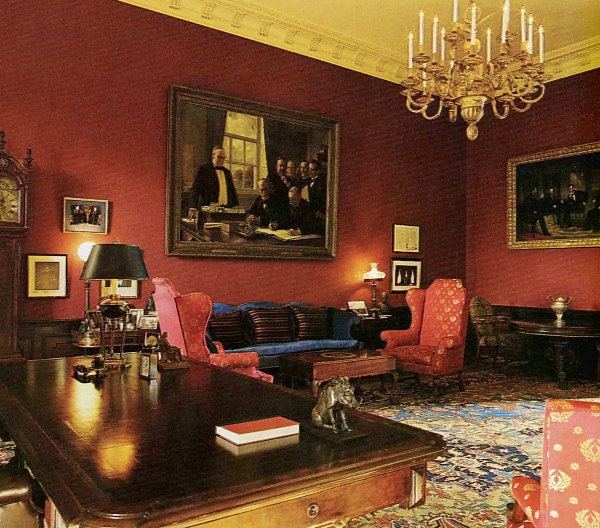
The room is a part of the first family's private apartments and is used as a study by the president. The Treaty Room has been used as a waiting room, a cabinet room, and the president's office. President Andrew Johnson used the room for his cabinet meetings. Ulysses S. Grant continued this use and acquired a large Renaissance Revival style table to be used by his cabinet. The table remained in the room for many years, and President William McKinley oversaw the signing of the peace treaty with Spain which concluded the Spanish–American War on it on August 12, 1898.
President Bush addressed the nation from the Treaty Room on October 7, 2001, announcing that the War in Afghanistan had begun. In his memoirs Decision Points, Bush referred to the Treaty Room as "one of my favorite places in the White House."
President Barack Obama used the Treaty Room as one of his primary working offices.
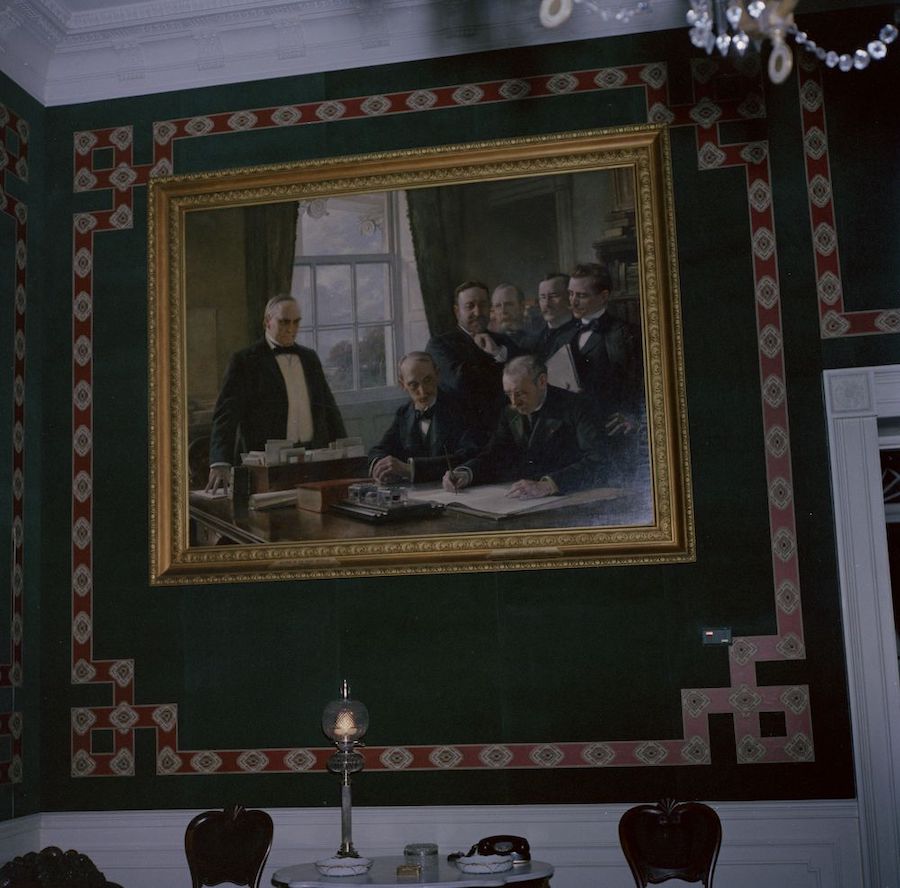
Signing of the Peace Protocol Between Spain and the United States, August 12, 1898.
https://www.jfklibrary.org/asset-viewer/archives/JFKWHP/1962/Month%2008/Day%2021/JFKWHP-1962-08-21-C
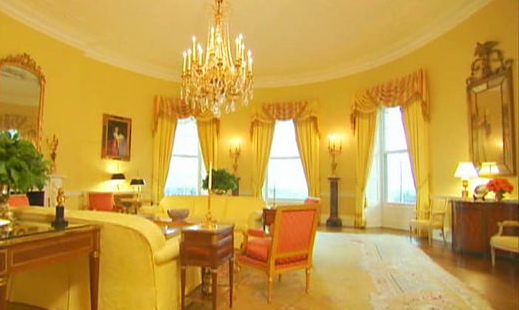
The Yellow Oval Room is located in the center of the second floor of the White House and has three large windows and a door that leads to the Truman Balcony. A set of double doors lead into the President's private bedroom suite. During past administrations the room has been used as a library, office and parlor. In recent years the room has been used for smaller intimate receptions and primarily for greeting visiting heads of state before proceeding down to the State Dinner.
Interesting facts:
First Lady Dolley Madison was the first to decorate the room in yellow damask. During the Harrison administration the first White House Christmas tree was placed in the room. President Roosevelt was in the room when he learned about the Pearl Harbor attack. After the Kennedy renovation of the White House the room was officially designated as the Yellow Oval Room.
The Yellow Oval Room is frequently redecorated by the presidential family but throughout the years the room's main color scheme has remained various shades of yellow. The furnishings are in the Louis XVI style with two comfortable sofas, several armchairs, a large Empire chandelier and a collection of antiques.
https://theenchantedmanor.com/tag/interesting-facts-about-the-yellow-oval-room-in-the-white-house
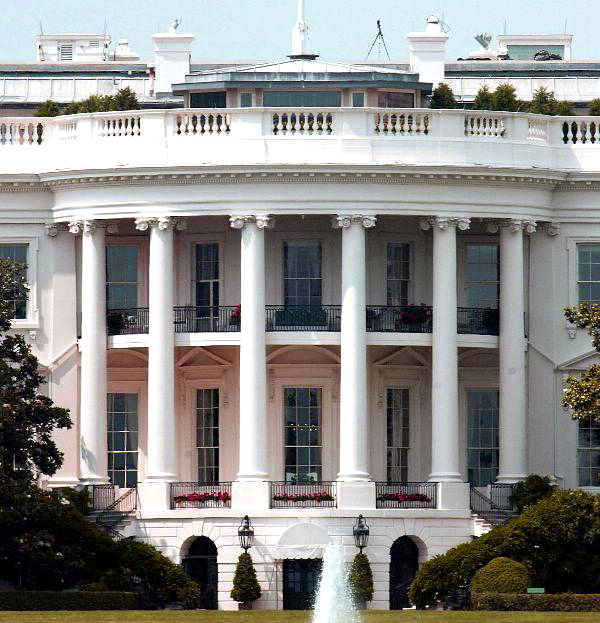
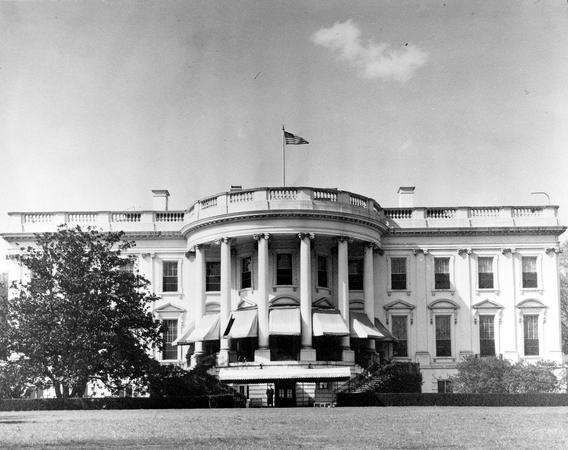
Early one evening in February 1946, Harry Truman summoned the White House's chief usher to the second floor Oval Study. He pointed out the window through the South Portico to the Washington Monument and Potomac River beyond.
"That's a magnificent sight," he said. Then he dropped his bombshell.
"I'd like to take better advantage of the view. I'm going to put a balcony there."
While every president had made changes to the White House's interior, some small and some significant, none had touched its iconic exterior since 1829, when Andrew Jackson had added the north portico to keep visitors from getting wet on rainy days.
Democrat Truman didn't bother asking the Republican Congress for the $16,000 to fund the project, since "no" was a foregone conclusion. So he came up with the cash by making cuts to the president's household account. Then, in typical Harry Truman fashion, he built his balcony. When the fuss finally died down, even the critics grudgingly admitted it was an improvement. And the American people gave it a thumbs up.
Harry Truman's secret reason for building it:
Truman's passion for his wife Bess is one of the presidency's greatest love stories. He hated being apart from her. While Bess loved Harry in return, she hated the spotlight that accompanied the presidency. Though she admirably performed her duties as First Lady, she jumped at any chance to return to their home in Independence, where she spent the entire summer of 1945, leaving a lonely Harry pining for her in the White House.Their daughter Margaret wrote, "One of the chief pleasures of 219 North Delaware Street [the Independence house] was its porches, particularly the back porch ..." where the family whiled away summer evenings "secure from prying eyes." The Truman's sat there for hours, reading, listening to baseball on the radio (Bess was a huge baseball fan), and playing cards while Bess savored the privacy.
Since Harry's job didn't let him share the back porch with his wife back home, he decided to bring the back porch to Washington.
Harry Truman added the Truman Balcony in the hope it would lure his wife into staying with him during the summer months.
But it didn't work. Much as Bess appreciated the gesture, and genuinely liked the new balcony, it wasn't the same as the one at home. And nothing, nothing at all, could overcome her burning desire to flee Washington, with or without her husband. The summer of 1946 found her back on North Delaware Street.
